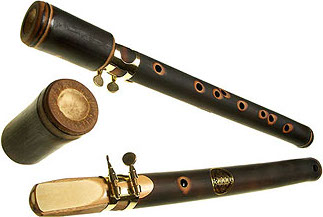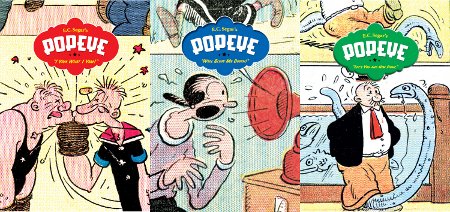Some time within the last several weeks, I finally got around to reading The Secret Agent (1907), by Joseph Conrad. The novel is interesting for a number of reasons. One of those is that, as with Heller's later Catch-22, events are driven by the characters' unquestioned misunderstandings one of another, and by terrible narrowness of vision. (Unlike Catch-22, Conrad's book is not particularly humorous in its beginnings.) But what most struck me about The Secret Agent is that Conrad identified and unsparingly depicted the mental process that leads most who turn to state socialism to do so, and what essentially propels most of those who proceed on to left-wing anarchism to do that.
One of the characters of The Secret Agent is Stevie. Stevie is a low-functioning young man; operationally a person of very limited intelligence. He is also someone who is concerned — often overwhelmed with concern — about the fate of people and of beasts who seem to be ill-treated. Stevie's concern is illustrated at various points in the story, but it is in Chapter VIII that they begin to take political form.
Stevie's mother, over the objections of her daughter, has had herself moved to an alms-house; Stevie and his sister, Winnie Verloc, see their mother to her new home. The cab-man drives a much-abused horse to pull his carriage, and responds to Stevie's imploring that the horse not be whipped as if it were nearly incomprehensible. But, after the move has been effected, the cabbie tells Stevie that, however hard life may seem to be for the horse, it is harder still for the cabbie, who is a poor man with a family. Stevie is moved by this information. The driver departs.
Stevie is rejoined by his sister; they begin the journey homeward.
Before the doors of the public-house at the corner, where the profusion of gas-light reached the height of positive wickedness, a four-wheeled cab standing by the curbstone with no one on the box, seemed cast out into the gutter on account of irremediable decay. Mrs Verloc recognised the conveyance.[1] Its aspect was so profoundly lamentable, with such a perfection of grotesque misery and weirdness of macabre detail, as if it were the Cab of Death itself, that Mrs Verloc, with that ready compassion of a woman for a horse (when she is not sitting behind him), exclaimed vaguely:
Poor brute!
Hanging back suddenly, Stevie inflicted an arresting jerk upon his sister.
Poor! Poor!
he ejaculated appreciatively. Cabman poor too. He told me himself.
The contemplation of the infirm and lonely steed overcame him. Jostled, but obstinate, he would remain there, trying to express the view newly opened to his sympathies of the human and equine misery in close association. But it was very difficult. Poor brute, poor people!
was all he could repeat. It did not seem forcible enough, and he came to a stop with an angry splutter: Shame!
Stevie was no master of phrases, and perhaps for that very reason his thoughts lacked clearness and precision. But he felt with greater completeness and some profundity. That little word contained all his sense of indignation and horror at one sort of wretchedness having to feed upon the anguish of the other—at the poor cabman beating the poor horse in the name, as it were, of his poor kids at home. And Stevie knew what it was to be beaten. He knew it from experience. It was a bad world. Bad! Bad!
Mrs Verloc, his only sister, guardian, and protector, could not pretend to such depths of insight. Moreover, she had not experienced the magic of the cabman’s eloquence. She was in the dark as to the inwardness of the word Shame.
And she said placidly:
Come along, Stevie. You can’t help that.
The docile Stevie went along; but now he went along without pride, shamblingly, and muttering half words, and even words that would have been whole if they had not been made up of halves that did not belong to each other. It was as though he had been trying to fit all the words he could remember to his sentiments in order to get some sort of corresponding idea. And, as a matter of fact, he got it at last. He hung back to utter it at once.
Bad world for poor people.
Directly he had expressed that thought he became aware that it was familiar to him already in all its consequences. This circumstance strengthened his conviction immensely, but also augmented his indignation. Somebody, he felt, ought to be punished for it—punished with great severity. Being no sceptic, but a moral creature, he was in a manner at the mercy of his righteous passions.
Beastly!
he added concisely.
It was clear to Mrs Verloc that he was greatly excited.
Nobody can help that,
she said. Do come along. Is that the way you’re taking care of me?
Stevie mended his pace obediently. He prided himself on being a good brother. His morality, which was very complete, demanded that from him. Yet he was pained at the information imparted by his sister Winnie who was good. Nobody could help that! He came along gloomily, but presently he brightened up. Like the rest of mankind, perplexed by the mystery of the universe, he had his moments of consoling trust in the organised powers of the earth.
Police,
he suggested confidently.
And there one has it. A great many of us would agree that the world is economically harder on many people than it ought to be. A great many of us would agree that society ought to do something about it. But the typical state socialist just unthinkingly grabs for the first social institution that comes to mind, the State; or, as Stevie puts it, police
. There's no real thought to what other institutions might be more appropriate. If the point that we are talking about an institution that is first-and-foremost about violence is considered at all, there is little reflection on the question of whether and when violence is appropriate, unless that consideration is to rationalize the conclusion that violence should be used after the conclusion was already implictly embraced. But Stevie isn't drawn to wrestle with the a theory of what ought to be the limits of the State or of the use of violence:
The police aren’t for that,
observed Mrs Verloc cursorily, hurrying on her way.
Stevie’s face lengthened considerably. He was thinking. The more intense his thinking, the slacker was the droop of his lower jaw.[2]
And it was with an aspect of hopeless vacancy that he gave up his intellectual enterprise.
Not for that?
he mumbled, resigned but surprised. Not for that?
He had formed for himself an ideal conception of the metropolitan police as a sort of benevolent institution for the suppression of evil. The notion of benevolence especially was very closely associated with his sense of the power of the men in blue. He had liked all police constables tenderly, with a guileless trustfulness. And he was pained. He was irritated, too, by a suspicion of duplicity in the members of the force. For Stevie was frank and as open as the day himself. What did they mean by pretending then? Unlike his sister, who put her trust in face values, he wished to go to the bottom of the matter. He carried on his inquiry by means of an angry challenge.
What for are they then, Winn? What are they for? Tell me.
Winnie disliked controversy. But fearing most a fit of black depression consequent on Stevie missing his mother very much at first, she did not altogether decline the discussion. Guiltless of all irony, she answered yet in a form which was not perhaps unnatural in the wife of Mr Verloc, Delegate of the Central Red Committee, personal friend of certain anarchists, and a votary of social revolution.
Don’t you know what the police are for, Stevie? They are there so that them as have nothing shouldn’t take anything away from them who have.
She avoided using the verb to steal,
because it always made her brother uncomfortable. For Stevie was delicately honest. Certain simple principles had been instilled into him so anxiously (on account of his queerness
) that the mere names of certain transgressions filled him with horror. He had been always easily impressed by speeches. He was impressed and startled now, and his intelligence was very alert.
What?
he asked at once anxiously. Not even if they were hungry? Mustn’t they?
The two had paused in their walk.
Not if they were ever so,
said Mrs Verloc, with the equanimity of a person untroubled by the problem of the distribution of wealth, and exploring the perspective of the roadway for an omnibus of the right colour. Certainly not. But what’s the use of talking about all that? You aren’t ever hungry.
Although it is plainly explained that Winnie is not really out to express a Machiavellian theory of the state, she has done so. Actually, many people from many otherwise very different ideologies would embrace this theory of what the State actually does; many anarchists (and not just left-wing anarchists) would insist that the State is at best unnecessary to all but those who would use to effect or to sustain an unjust distribution of economic power. But, in Stevie's case, in a matter of minutes he's invented state socialism, and then had his statism but not his socialism contradicted, and so heads down a path to left-wing anarchism. Someone else will later help him further down that path.
[1] The poor driver has taken his meager pay not home to his family, but to a pub. Earlier, it is revealed that a scrub-woman frequently plays upon Stevie's desire to help her and her family, only to spend on alcohol the money that he gives to her. Perhaps Conrad was inclined to believe that Work is the curse of the drinking classes.
or perhaps he meant no more than to emphasize Stevie's gullibility. In any case, the interpretation is separable from what I seek principally to note.
[2] Note that Conrad has written Stevie as quite literally a slack-jawed fool.



![[image of two cards, each showing Goofy with his head and neck sticking up from within or behind a woodpile]](wp-content/uploads/2011/07/inwoodpile_450x338.jpg)
![[animation of Popeye jumping from a stool and beginning to pump his fists]](wp-content/uploads/2011/03/pop_opt.gif) For a better sense of what is happening here, watch
For a better sense of what is happening here, watch 

![[hand-colored photographic image by D Calcagni from 1919 of young woman in bathing suit, sitting in a studio facsimile of a beach, lacing her foot-wear]](wp-content/uploads/2011/02/calcagi_450x289.jpg)
![[image of Chaney, Goodman, and Schwerner, being murdered]](wp-content/uploads/2010/12/rockwell_southernjustice_450x571.jpg)
![[image of burly female riveter]](wp-content/uploads/2010/12/rockwell_riveter_450x581.jpg)
![[image of returning soldier being greeted in tenement neighborhood]](wp-content/uploads/2010/12/rockwell_homecoming_450x586.jpg)
![[image of police officer, small boy with bindle, and short-order cook at counter]](wp-content/uploads/2010/12/rockwell_runaway_450x512.jpg) It would be a mistake to say that these were Americans as Rockwell wished them to be. Rather, these are people as Rockwell conceptualized Americans. He does not generally make them pretty; they are apt to have craggy or slightly comical faces, to be noticeably scrawny or chubby rather than athletic in appearance. But there is an underlying
It would be a mistake to say that these were Americans as Rockwell wished them to be. Rather, these are people as Rockwell conceptualized Americans. He does not generally make them pretty; they are apt to have craggy or slightly comical faces, to be noticeably scrawny or chubby rather than athletic in appearance. But there is an underlying 
